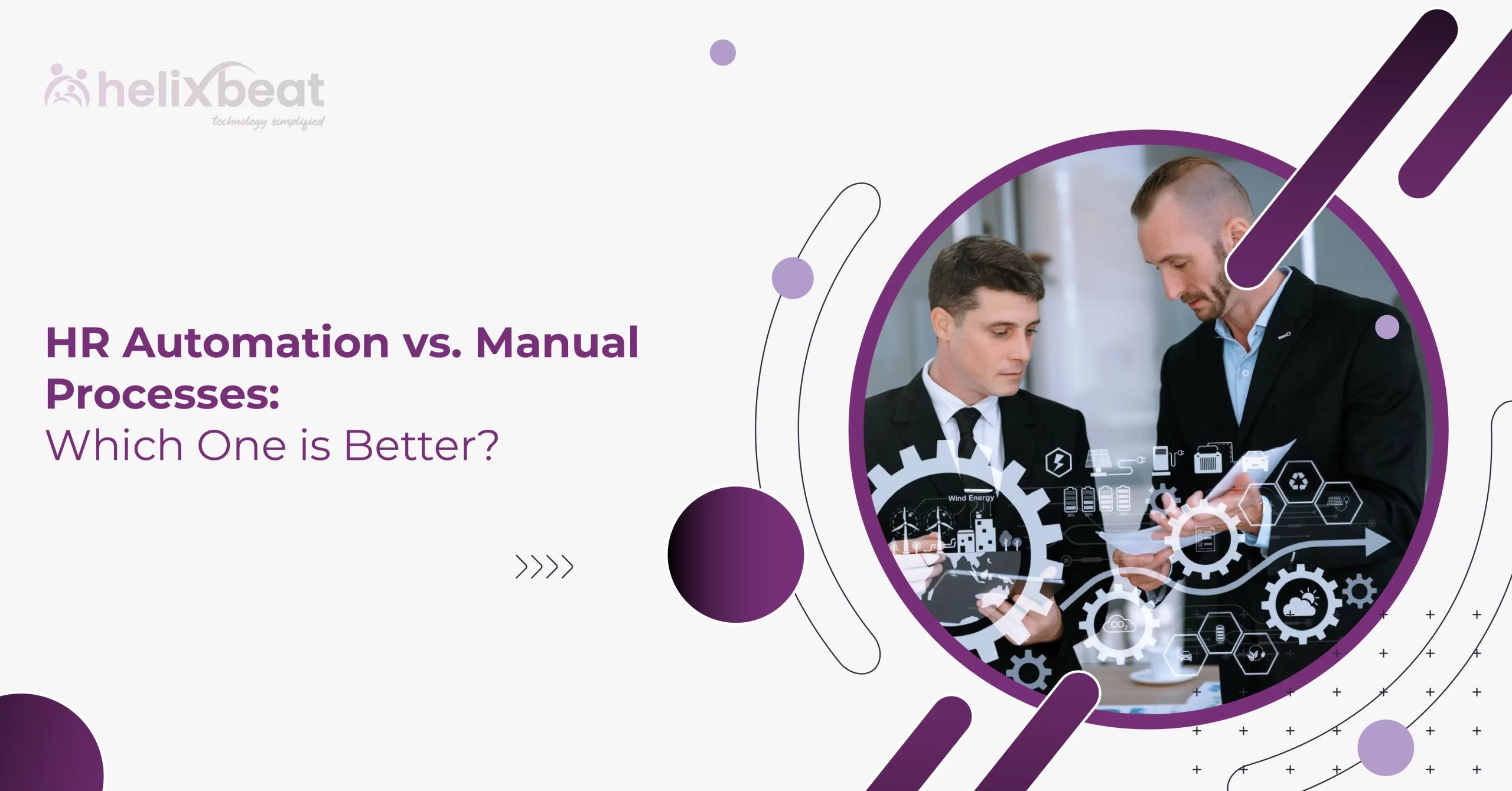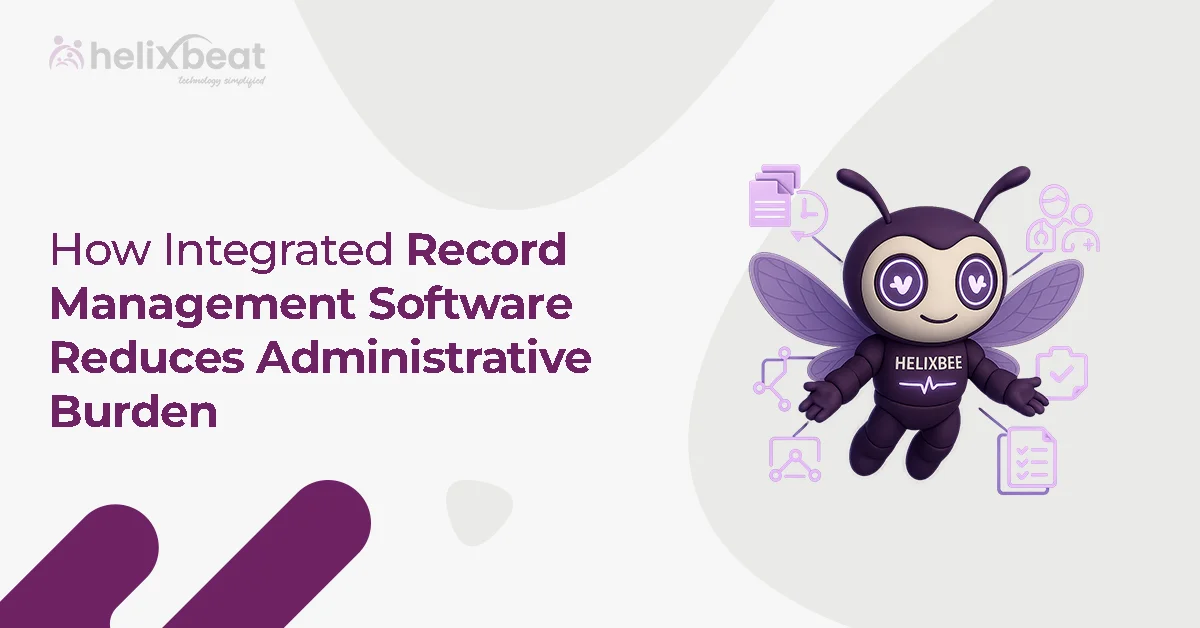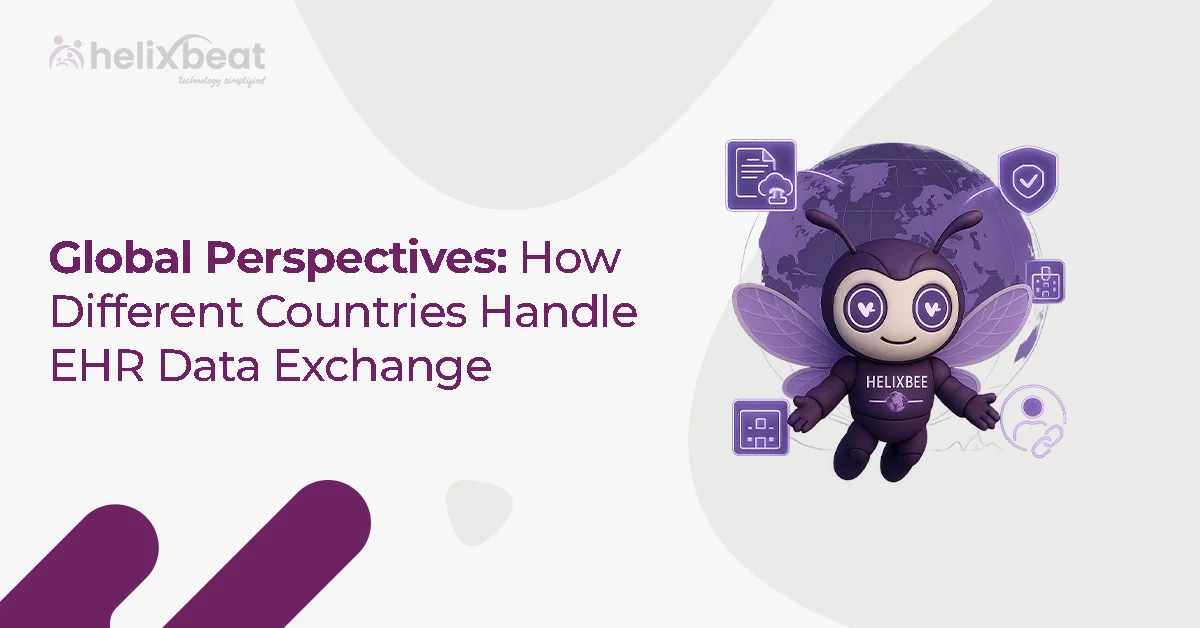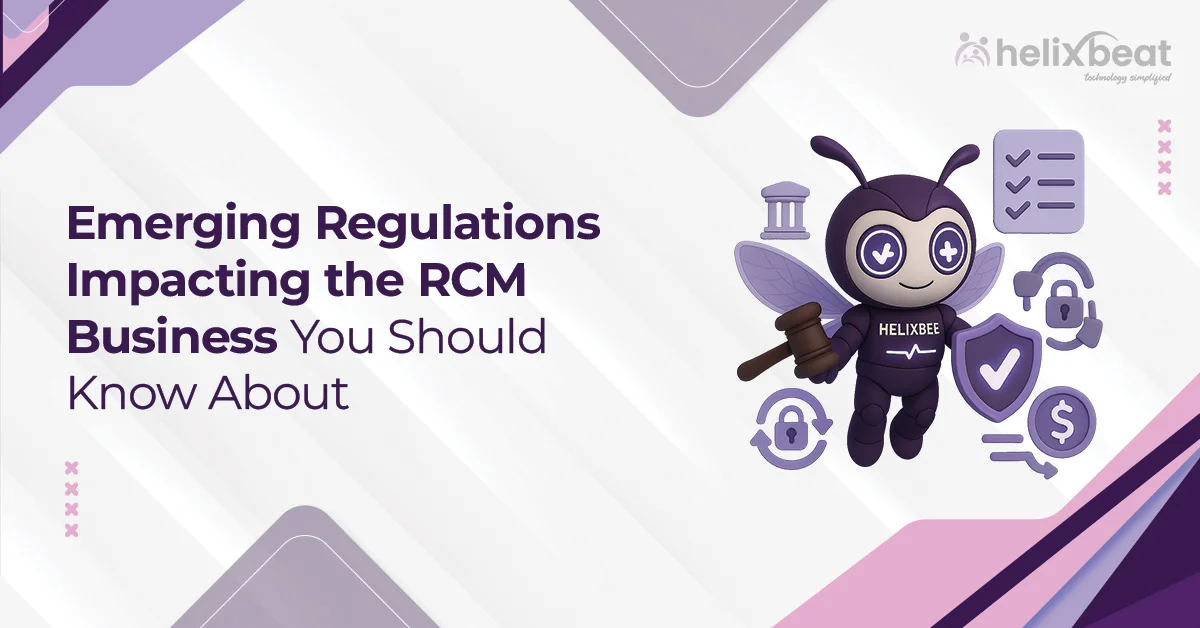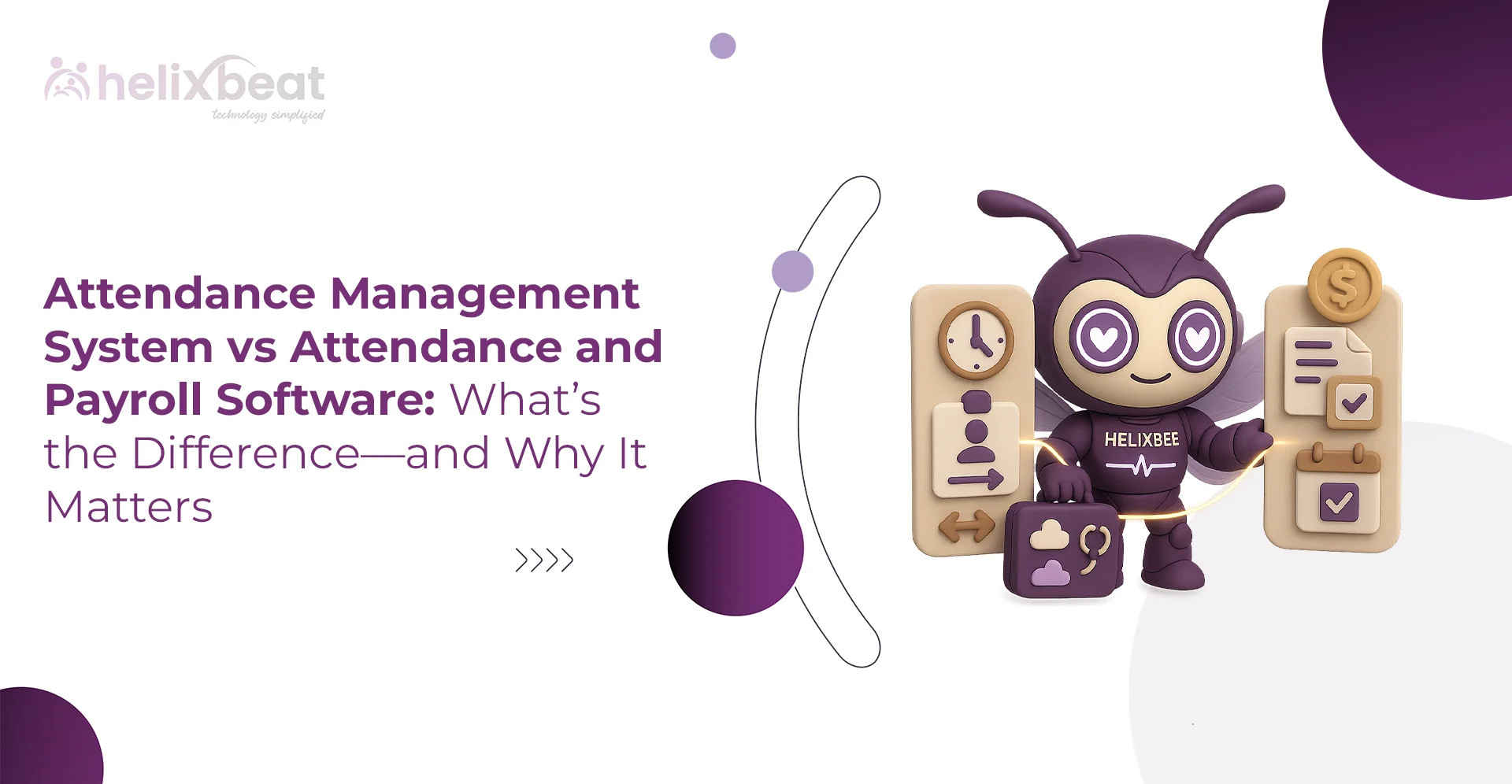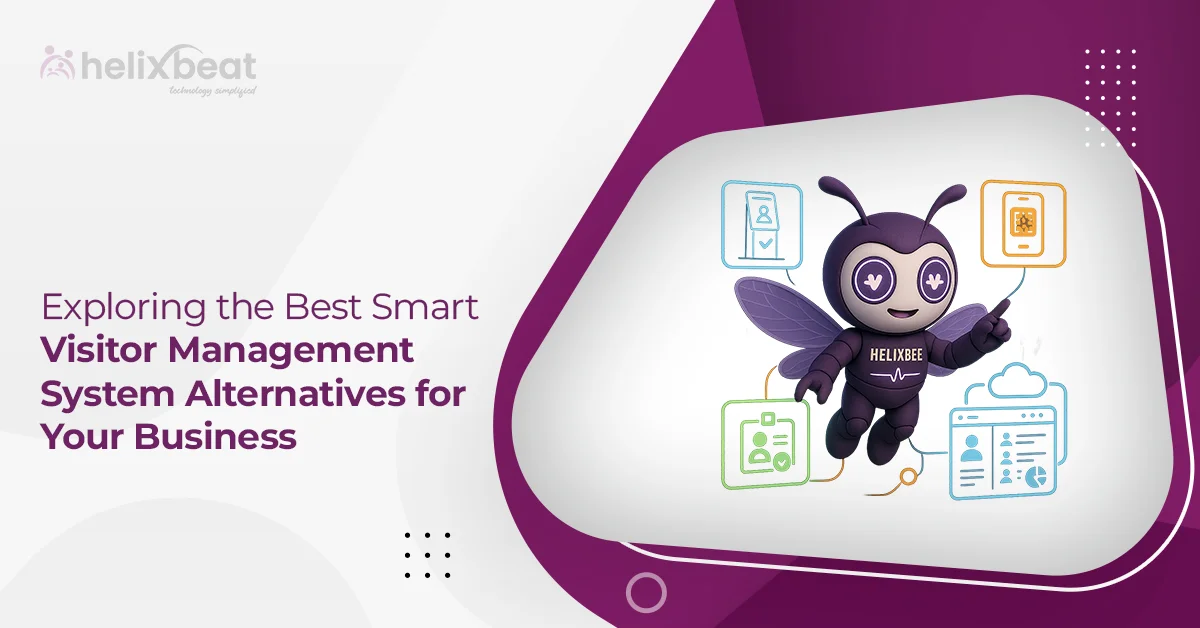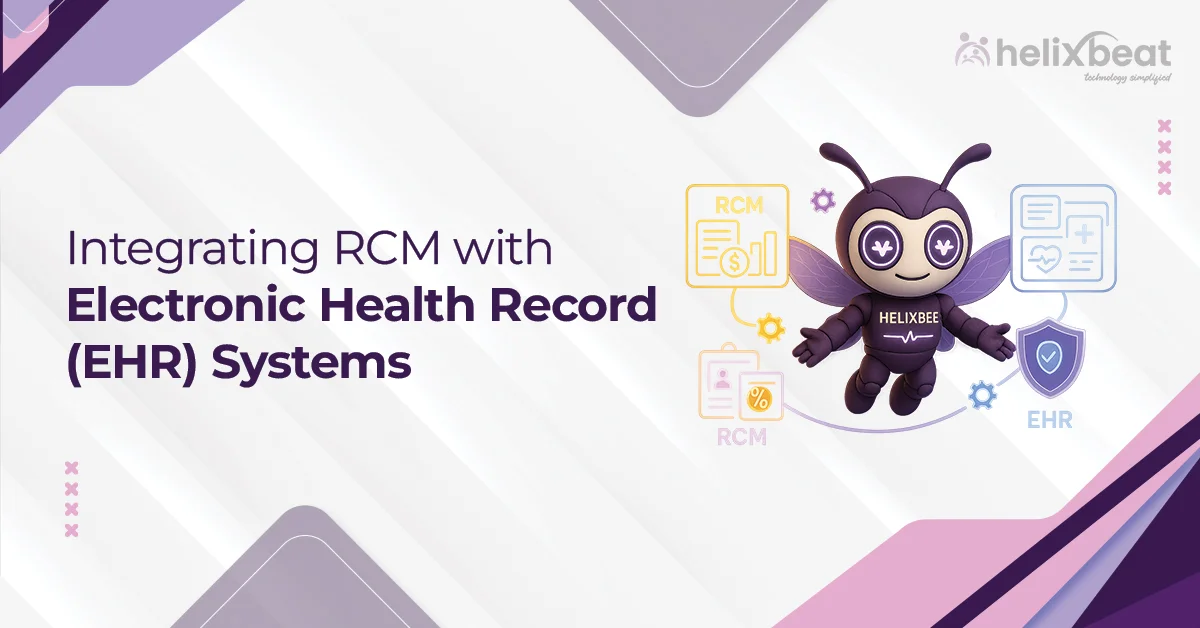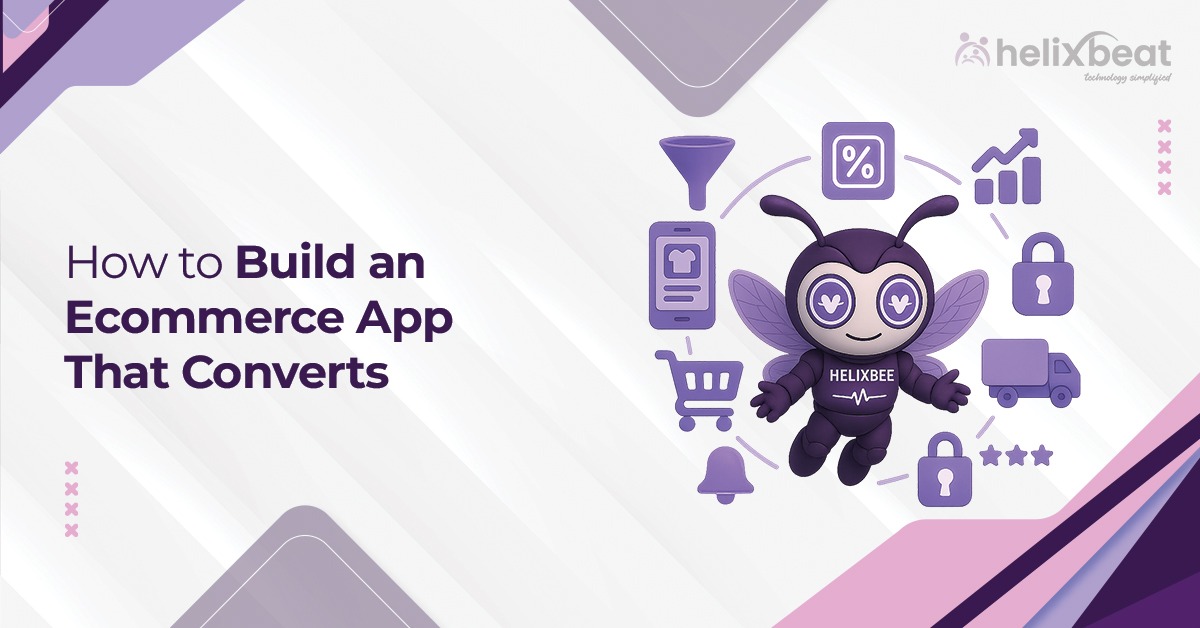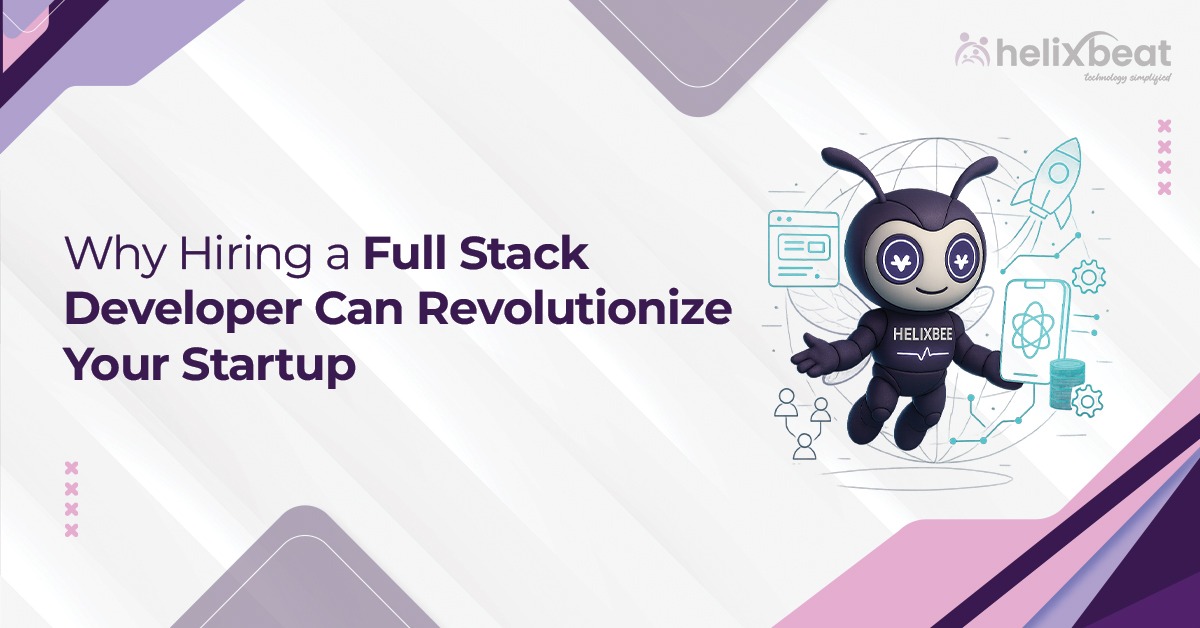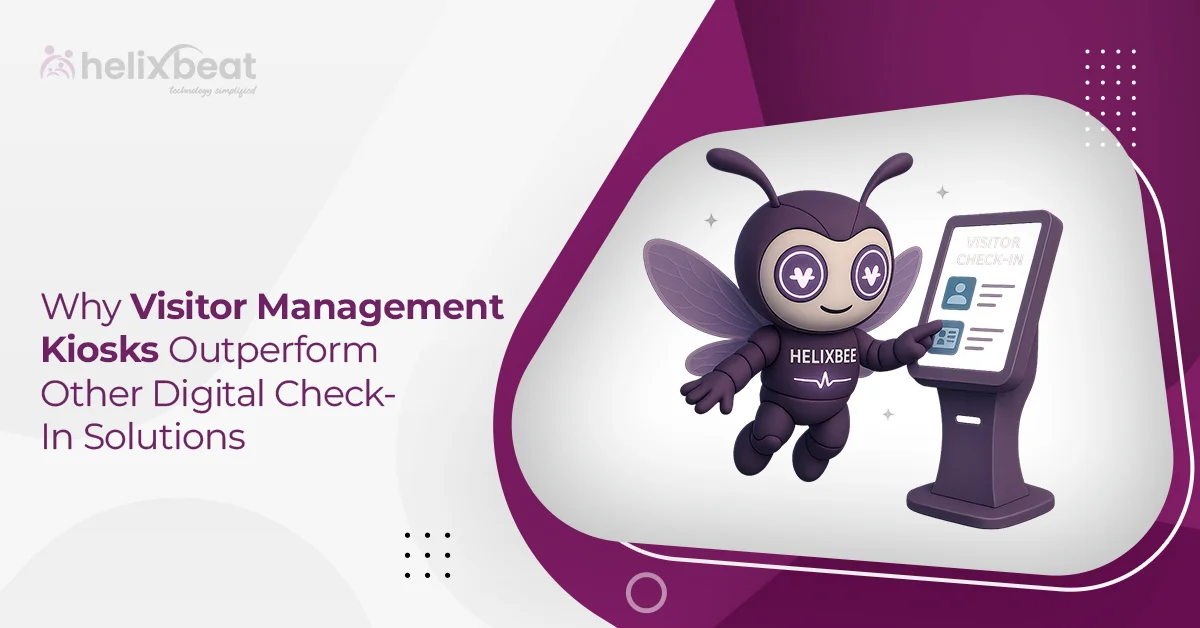Imagine running an HR department using only spreadsheets, emails, and paper records. While this approach may have worked in the past, it can now slow down operations, increase errors, and create unnecessary administrative work. In today’s fast-paced business environment, manual HR processes are often inefficient and difficult to scale.
HR automation has changed the way HR teams manage tasks by streamlining operations and reducing administrative burdens. With Synergy by Helixbeat, HR teams can automate attendance tracking, payroll processing, and employee engagement, making workflows more efficient and accurate.
But is HR automation vs. Manual Processes always the better choice over manual processes? In this blog, we’ll explore the pros and cons of both, real-world examples, and how businesses can decide on the best approach for their workforce.
Table of Contents
What Are HR Automation and Manual Processes?
HR tasks can be managed in two ways—through automation or manual processes. Understanding the differences helps businesses choose the best approach for efficiency and accuracy.
HR Automation
HR automation uses software to handle tasks like payroll, leave management, employee records, and performance tracking. Platforms like Synergy streamline these processes, reducing the need for manual data entry. This saves time and minimizes errors, allowing HR teams to focus on employee engagement and strategic planning rather than routine administrative work.
Manual HR Processes
Manual HR management relies on paper records, spreadsheets, and emails to track payroll, attendance, and employee requests. While it may offer a personal touch, this approach is time-consuming and prone to mistakes. Lost records, miscalculations, and delays in processing can create inefficiencies, making it harder to manage HR tasks effectively.
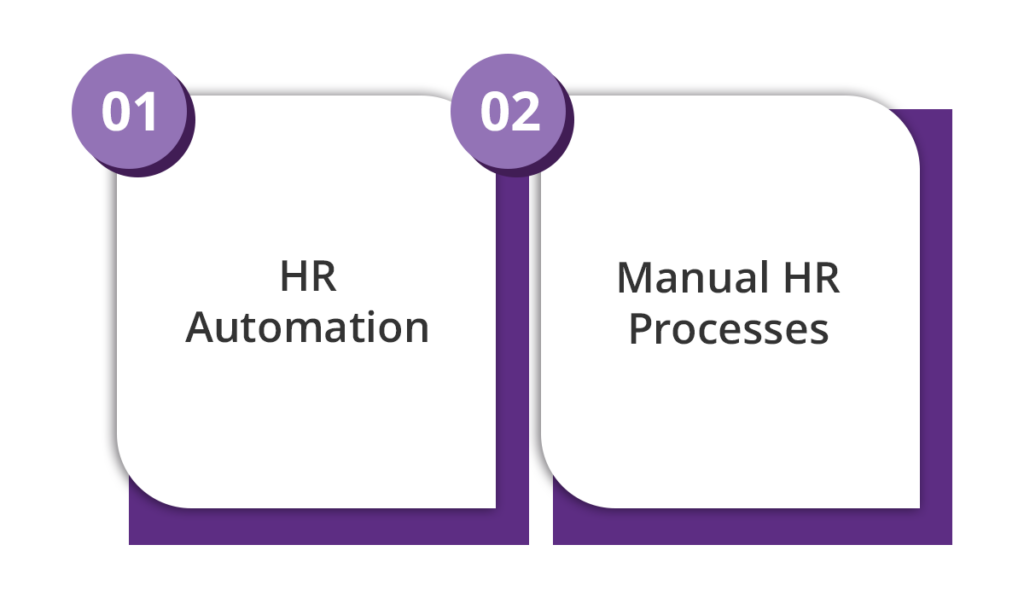
HR Automation vs. Manual Processes: A Side-by-Side Comparison
Managing HR tasks efficiently is essential for businesses of all sizes. The way HR functions are handled—whether manually or through automation—can impact productivity, accuracy, and employee satisfaction. While some companies still rely on traditional methods, many are turning to automation to reduce workload and improve efficiency. Let’s compare both approaches and see how Synergy by HelixBeat simplifies HR management.
1. Efficiency and Speed
Handling HR processes manually often involves entering data, verifying records, and managing approvals through emails or paperwork. This can slow down operations and create unnecessary delays. For example, a small HR team may spend hours processing payroll, tracking attendance, and managing leave requests, which diverts attention from more strategic responsibilities.
On the other hand, automation speeds up these processes by instantly processing payroll, approving leave requests, and tracking attendance without manual intervention. With Synergy by HelixBeat, payroll processing takes minutes instead of hours, ensuring employees receive accurate salaries on time while allowing HR teams to focus on higher-value tasks.
2. Reducing Errors and Improving Accuracy
Manual data entry is prone to mistakes, which can lead to payroll discrepancies, incorrect tax deductions, and compliance issues. A single miscalculation in an employee’s salary or benefits can cause frustration and erode trust in HR processes. Additionally, rectifying such errors often requires significant time and effort.
Automated systems minimize these risks by performing accurate calculations, maintaining up-to-date records, and ensuring compliance with labor laws. Synergy’s payroll management tool applies correct deductions, tax rates, and overtime calculations, eliminating miscalculations and reducing the need for manual corrections.
3. Cost-Effectiveness
Manual HR processes often require more staff to handle administrative work, increasing labor costs. As a company grows, the need for additional HR personnel to manage payroll, attendance, and compliance also increases, which can put a strain on budgets.
In contrast, automation reduces the need for excessive manual intervention, helping businesses cut costs while improving efficiency. Companies using Synergy by HelixBeat have reported up to a 30% reduction in HR administration expenses due to streamlined workflows that eliminate redundant processes.
4. Compliance and Record-Keeping
Keeping up with labor laws and maintaining compliance manually can be challenging, as HR teams must constantly monitor policy updates and revise records accordingly. Missing regulatory changes or failing to update employee records properly can lead to legal penalties and employee grievances.
Automated HR systems simplify compliance by automatically updating policies and tracking regulatory changes. Synergy by HelixBeat maintains accurate records and generates compliance reports instantly, allowing businesses to stay legally compliant while making audits more efficient.
5. Enhancing Employee Experience
Employees often face delays when requesting leave, accessing payslips, or making updates to their personal information due to slow, manual approval processes. These inefficiencies can lead to frustration, reducing overall job satisfaction.
With automation, employees gain access to self-service portals where they can manage their own HR needs without waiting for approvals. Synergy by HelixBeat offers a mobile-friendly platform that enables employees to check payroll details, request leave, and update records instantly, improving convenience and engagement.
6. Data Security and Storage
Storing employee records in paper files or unsecured spreadsheets increases the risk of data breaches, unauthorized access, or accidental loss. Sensitive HR information, including payroll details and personal records, needs to be securely stored to protect employee privacy and prevent compliance violations.
Cloud-based HR solutions offer secure data storage with restricted access controls. Synergy by HelixBeat encrypts employee data and ensures that only authorized personnel can access confidential records, reducing security risks while ensuring compliance with data protection regulations.
7. Scalability for Growing Businesses
As businesses expand, manually managing HR processes becomes increasingly difficult. Tracking payroll, attendance, and employee records for a growing workforce requires additional resources, leading to inefficiencies and potential administrative bottlenecks.
HR automation allows companies to scale without overwhelming HR teams. Synergy by HelixBeat can handle HR operations for businesses of all sizes, from startups to large enterprises, without requiring additional administrative effort, ensuring that growth does not lead to inefficiencies.
8. Performance Tracking and Analytics
Manually tracking employee performance can be time-consuming, inconsistent, and subjective. HR teams often rely on scattered spreadsheets or outdated methods, which may not provide a complete picture of an employee’s contributions and progress.
Automated performance tracking tools offer real-time insights into employee productivity and engagement. Synergy’s performance tracking feature enables businesses to set measurable goals, monitor progress, and identify areas for improvement, ensuring fair and objective evaluations.
9. Smarter Decision-Making with Real-Time Insights
HR teams relying on manual processes often make workforce decisions based on outdated or incomplete data. Without access to real-time insights, predicting staffing needs or optimizing HR strategies becomes challenging.
AI-powered HR solutions provide businesses with accurate reports and predictive analytics to support data-driven decision-making. Synergy by HelixBeat generates detailed workforce reports, helping HR teams analyze trends, track attendance patterns, and develop effective HR strategies.
10. Integration with Other Business Systems
Traditional HR setups often operate in isolation, making it difficult to integrate with payroll, accounting, and compliance tracking systems. This lack of connectivity can result in inefficiencies, duplicated work, and data inconsistencies.
HR automation bridges these gaps by integrating all HR functions into a single platform. Synergy by HelixBeat seamlessly connects payroll, attendance tracking, and compliance management, ensuring accurate record-keeping and streamlined workflows across departments.
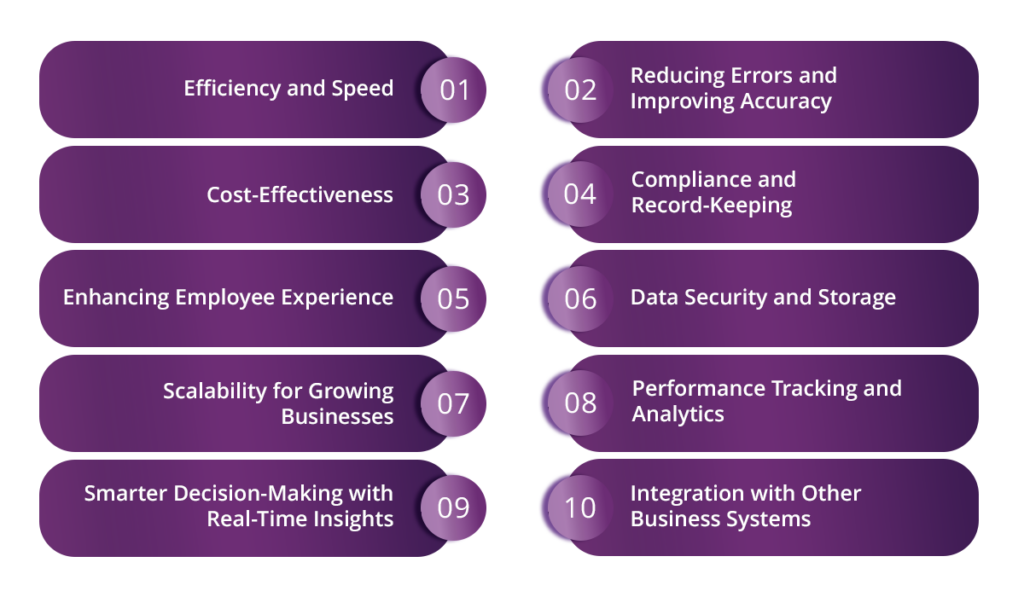
Making the Right Choice for Your Business
Deciding between manual HR processes and automation depends on factors like business size, workload, and long-term goals. For small businesses with a limited workforce, manual processes may still work since payroll and leave tracking involve fewer employees. However, as a company expands, relying on spreadsheets and emails can lead to inefficiencies, errors, and compliance risks.
For mid-sized businesses, automation simplifies HR tasks, reducing administrative workload and improving accuracy. Functions like payroll processing, attendance tracking, and compliance reporting become more efficient and reliable. Large enterprises managing multiple teams and locations benefit the most from automation, as manual methods can cause delays, inconsistencies, and increased costs.
If efficiency, accuracy, and scalability are priorities, HR automation is the better choice. With the right system in place, businesses can save time, minimize errors, and create a smoother experience for both HR teams and employees.
To Wrap It Up
The choice between HR automation and manual processes comes down to efficiency, accuracy, and long-term growth. While manual processes may seem familiar, they often lead to delays, errors, and increased administrative work. In contrast, automation simplifies HR tasks, improves accuracy, and reduces operational costs.
Synergy by HelixBeat offers a comprehensive solution for attendance tracking, payroll management, compliance, and employee engagement. Whether you run a small business or a large enterprise, automating HR processes helps streamline operations and allows HR teams to focus on more strategic tasks.
Switching to automation isn’t just about convenience—it’s about making HR management smoother and more effective. Take the next step in optimizing your HR workflow with Synergy by HelixBeat.
FAQs
1. What is HR automation?
HR automation uses software and AI to streamline HR tasks such as payroll processing, leave management, and performance tracking.
2. What are the disadvantages of manual HR processes?
Manual HR processes are time-consuming, prone to errors, and difficult to scale as a company grows.
3. How does HR automation improve payroll accuracy?
HR automation eliminates manual calculations, reducing payroll errors and ensuring compliance with tax and labor laws.
4. Is HR automation cost-effective?
Yes, HR automation reduces administrative costs, improves efficiency, and minimizes compliance-related risks.
5. Can small businesses benefit from HR automation?
Yes, small businesses can save time and resources by automating tasks like leave tracking, payroll, and employee record-keeping.



